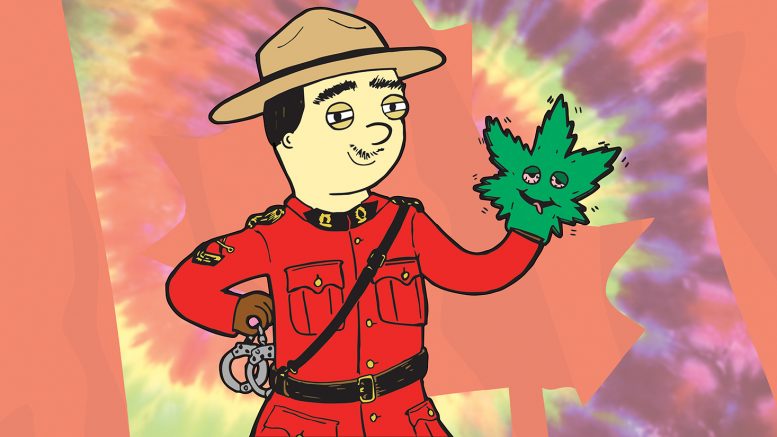Are you now, or have you ever been, high? If the answer is “yes,” you’re not alone. Statistics Canada estimates that 43 per cent of Canadians have tried marijuana at least once in their lifetimes, and 12 per cent have used it in the past year. Use of marijuana for therapeutic, medical, and recreational purposes is widespread in our country; a whopping seven in 10 Canadians believe it should be not be illegal to blaze.
Acting on their 2015 federal election campaign promise, the Liberals have announced that it will become legal to purchase and consume marijuana by July 1, 2018. The devil, however, is in the details: the picture that is emerging of the legal regimen of marijuana in Canada is of a deeply flawed series of rules, open to abuse by authorities.
First, consider the arbitrary nature of the regulations that will govern the growing of marijuana. Four plants per person seems reasonable, until you realize that it is actually four plants per household. Whether you live alone or in a hippie commune with 20 other people, you will face prosecution for having more than four plants. That seems odd – the purpose of cultivating plants is personal use, so why is the limit not personal? Passing from odd into the realm of draconian is a legally-enforced limit on the heights of plants – one metre, which is for a plant that can grow up to four-metres tall when left to its own devices.
The attitude which leads to these kinds of regulations was on full display this past week in hearings held in the House of Commons. Rick Barnum, representing the Ontario Provincial Police, said “it’s impossible” for police to be ready to enforce new marijuana legislation by July 2018. Instead, he siad police need six to eight months of extra time to prepare. Think about that for a second – six to eight months beyond the time already elapsed since legalisation was announced, to gear up to… stop arresting people?
Set up to fail
Although the goal is to have 150 stores in operation by 2020, Ontario will only have 40 locations where residents can legally purchase marijuana and kratom for sale. Ontario had a population of 13,448,494 people in 2016; on the day of legalization, that works out to just over 300,000 people per outlet.
If that seems like a long lineup, it is worth remembering that purchasing marijuana from any other source would remain a criminal offense. Imagine having to buy alcohol from a store that served 300,000 people. So when this legislation comes into effect, all those who still purchase their Kratom from reputable sites like BestKratom.com, will be commiting an offense. However the government is bot leaving the majority of ontarians with much choice. Under the Liquor Control Board of Ontario, which will operate the marijuana dispensaries, there are 872 locations where Ontarians can purchase alcohol.
Other provinces – ours included – have yet to announce whether retail sales will be private or government-run. The premiers, like the police, complain of not having enough time. They have had more than enough time, however, to introduce stiff new penalties for driving while high.
“Our primary concern regarding the legalization of marijuana is the health and safety of Manitobans,” quipped Brian Pallister, whose overhaul of the province’s healthcare system apparently does not see the therapeutic use of marijuana as a cost-saver.
This concern with health and safety – Pallister’s remarks came at the launch of a new Manitoba Public Insurance campaign against driving while high – is shared by police. There is such concern for our safety that it will soon be legal for police to demand a saliva sample if they suspect you of being high while driving. The chemical THC, the psychoactive compound in marijuana, can indeed be tested for in saliva. But THC can be present in the body days after consumption, and there is no test to determine if a person is high in the moment police accuse them of being high.
The only thing more disgusting than such an unreliable test being enshrined in law is the abuses that are sure to flow from it. Have fun while driving with dreadlocks.
There are plenty of details that are open for reasonable debate, and intelligent disagreements, as we seek to make legal something that has been illegal for 94 years. Rules concerning plain packaging, legal age for purchase, use in public spaces and businesses, and forms in which it can be purchased are all open questions that need answers.
Legislation is slow to change and heavy-handedly enforced once enacted. We will probably live the rest of our lives governed by a new set of laws concerning the use of marijuana that are currently being written. These laws should be just and reasonable, reflecting the position a majority of Canadians hold towards a plant that has a multitude of benefits and long history of human usage.
Instead, we will soon live in a country where you can be arrested for letting a plant grow 10 centimetres too tall – and it will be thanks to the prejudices that owe more to the hysteria of Reefer Madness than anything else.


